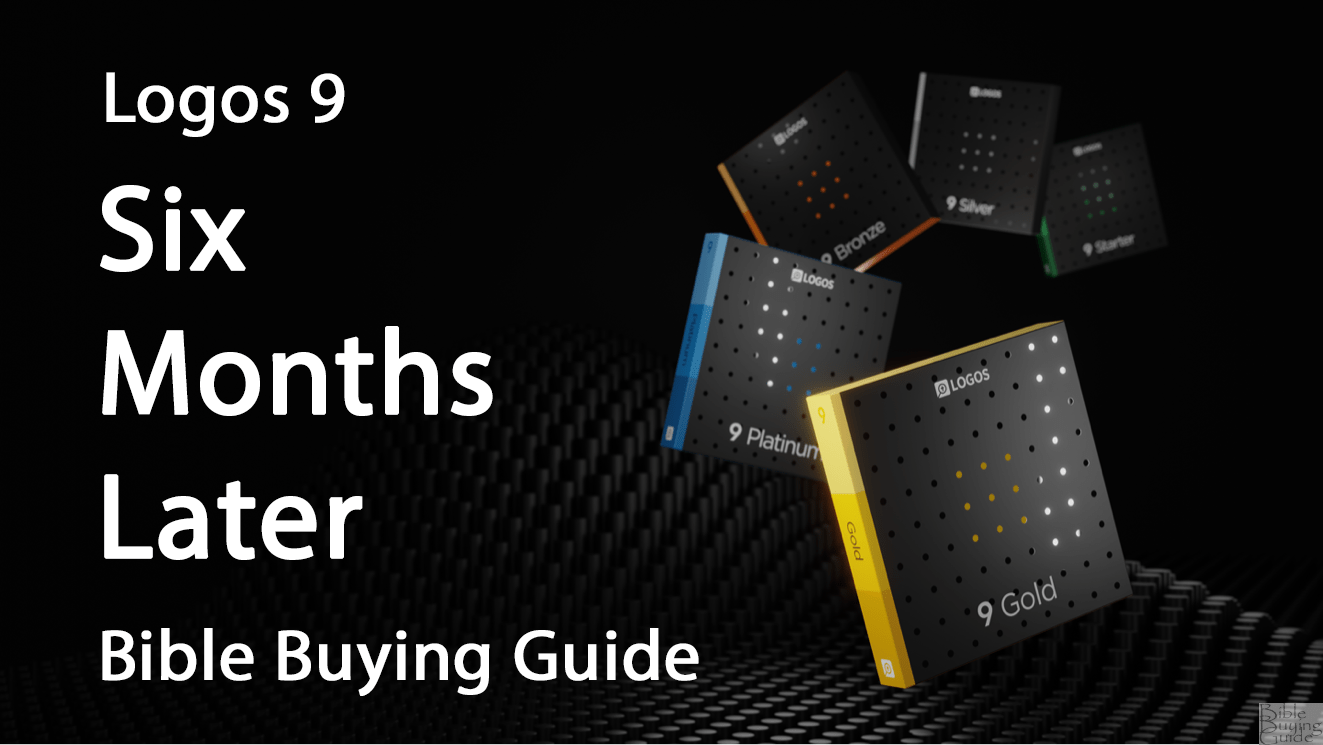
I’ve used Logos 9 for six months and it’s changed the way I read, study, prepare sermons, and preach. I reviewed Logos 9 when it launched, but now I want to look at Logos 9 – six months later to show how I’ve come to use this powerful Bible software on a daily or weekly basis. At the end of this article, I’ll mention the other tools that I use often and the things that stand out to me the most.
Logos 9 is currently on sale for 15% off. This sale goes through June 15, 2021.
Faithlife provided this Bible software in exchange for an honest review. I was not required to give a positive review, only an honest one. All opinions are my own.
________________________
Purchase Logos 9 (partner)
________________________
Table of Contents
Daily Reading
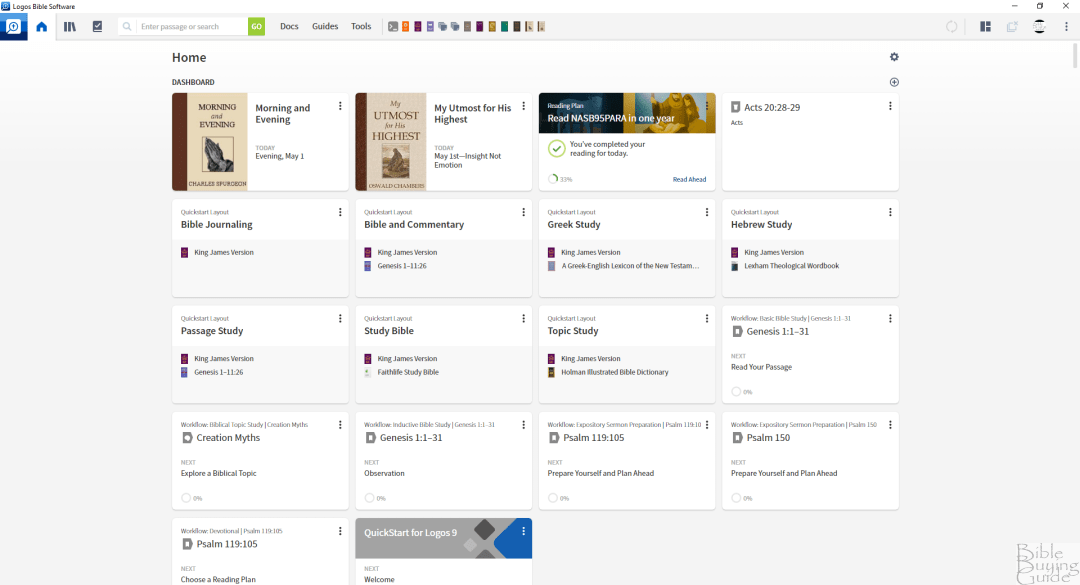
I’m using Logos 9 for my daily reading. This year, I’m going through My Utmost for His Highest and the 1995 NASB Paragraph Edition. Of course, I read other books and translations, but these are what I read in Logos every day. My Utmost keeps track of what day it is and gives you that days’ reading. For the NASB, I’ve created a 365-day reading plan using the Logos 9 reading plan tools so it can keep track of my reading for me. For other books, I use a reading plan designed for that book.
Automatic Reading Plan – My Utmost for His Highest
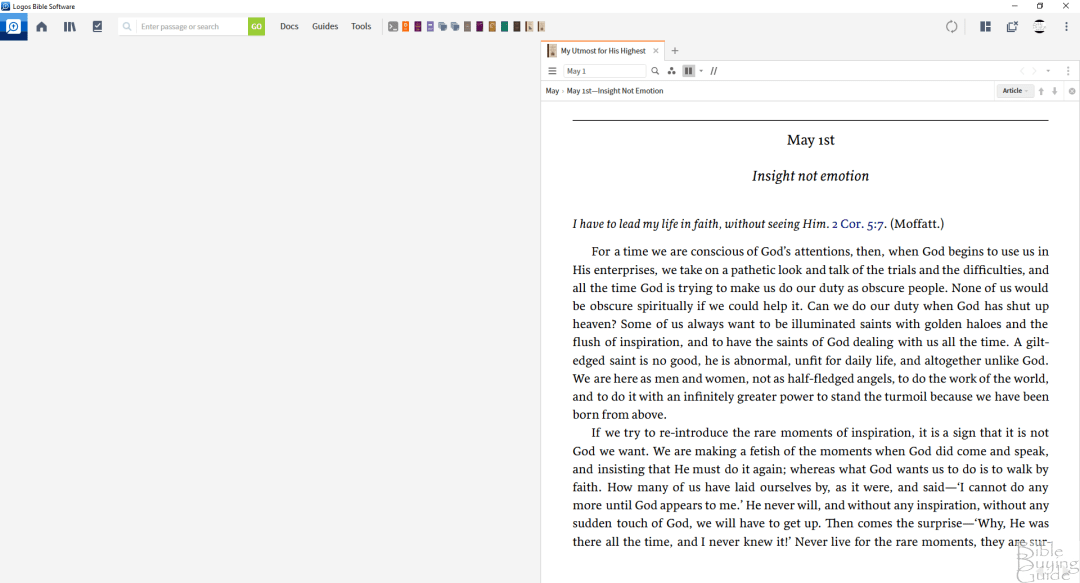
My Utmost for His Highest has a daily devotional schedule that keeps track of what day it is. I just read that days’ devotional and don’t have to worry about it. With Logos 9, I could set up a reading plan if I wanted it to track my progress. I like to read it with nothing else open. I’ve set it to show a single column. If I want to see the verses that it mentions, I just hover over the reference and it shows the verse in a popup.
Custom Reading Plan – Other Books
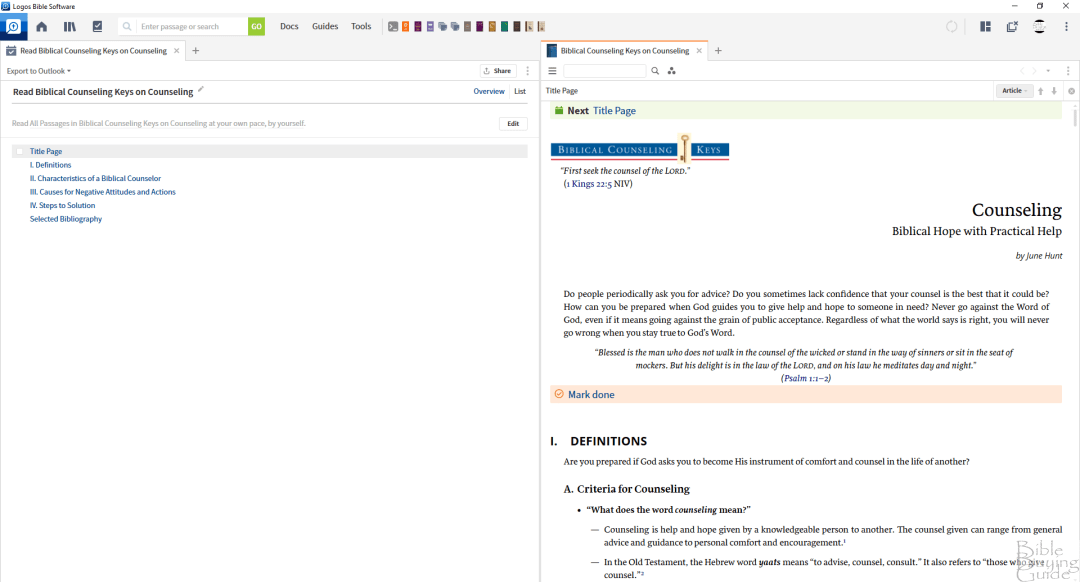
I set up a reading plan for other books that I’m reading. This helps me get through it and stay on track. Otherwise, I might get distracted or go too long without reading it.
Custom Reading Plan – 1995 NASB Paragraph Edition
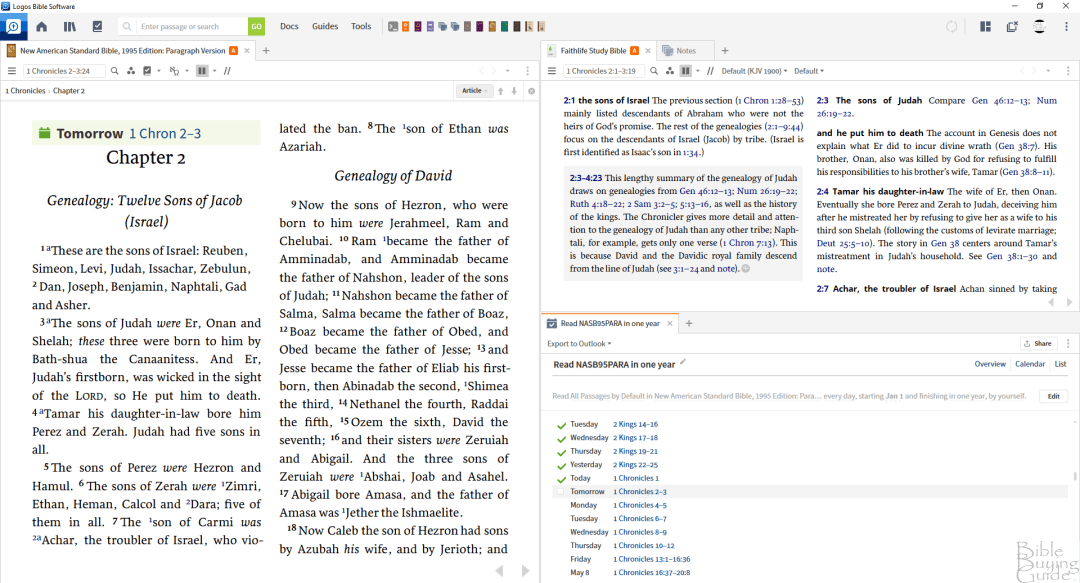
For my daily Bible reading, I’m reading through the 1995 NASB Paragraph Edition this year. I mostly use my desktop pc. Even if I read from a printed Bible, I still use Logos 9 to keep track of my reading plan. When I first open it, it shows the Bible on the left and the reading plan at the bottom on the right. The Faithlife Study Bible and my Notes are open at the top. I usually don’t read it this way. I could change this in the settings, but I like having the option.
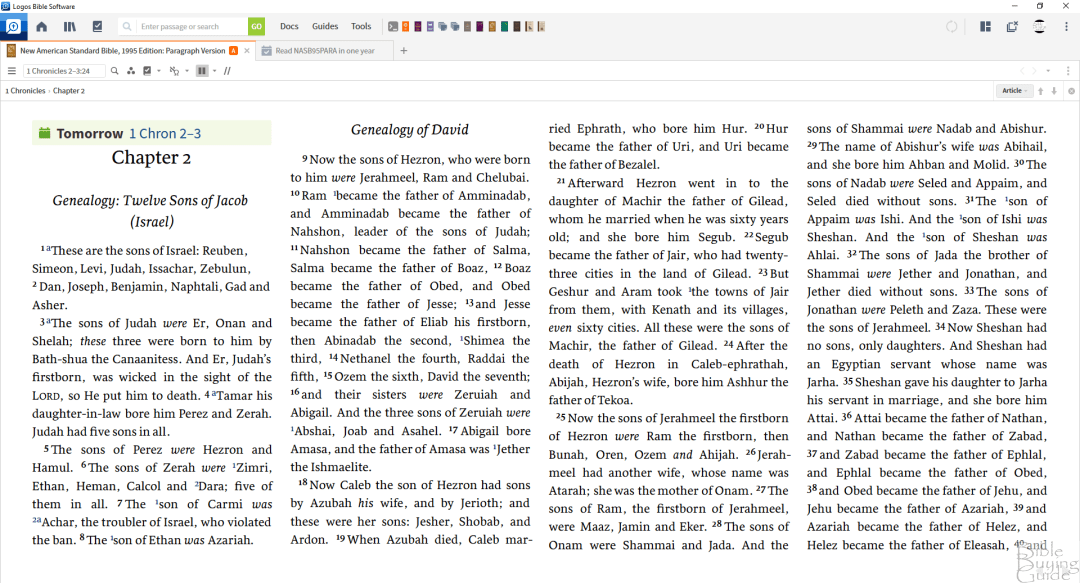
My favorite reading layout is to stretch the windows to give me 4 columns. It’s more panoramic and gives me an idea of how much I have left. I’ve removed most of the study icons so I only have the footnotes.
I sometimes read from the Logos app on my phone or an Amazon Fire tablet. It works great in both the 8-inch and 10-inch models. The app could use some more font size options, though. Also, the formatting for poetic settings looks excellent on tablets, but it isn’t ideal on my phone. My phone is too narrow. Turning it to landscape makes it too wide. Other apps I enjoy for reading on my phone or tablets include PocketBible and Olive Tree.
When I’m done for the day, I click that I’ve read that days’ reading and my Logos reading plan keeps track of it for me. It’s easy to use and I never have to worry about what I should read each day.
Study
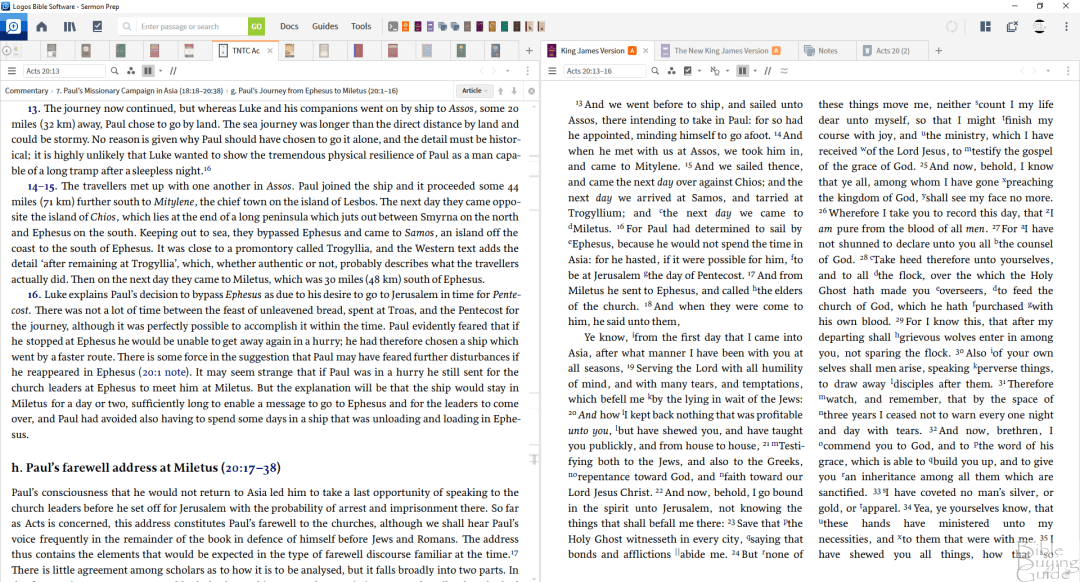
For study, I’ve set up some tabs on one side with commentaries, dictionaries, references, etc. The other side has a few Bibles and my notes. I keep them all on the same link set so the study tools follow the verse I’m on. I’ve saved this layout so it’s always ready to use. I like to read the Scriptures and make notes as I go. I’ll look through the tools to get insights into the text. Of course, I could just click the text and let it search my library or searching in the Factbook, but I like having specific tools already open so I can see the full context.
Sermon Preparation

For sermon preparation, I use the same tools that I use for study. This is the same window, but with the sermon editor open. My sermon prep has gotten a lot easier by using this method. I used to use study Bibles in the Kindle app on my pc. I’d write my notes in Microsoft Word and consult all of the study Bibles for information. This works great, but I’d have to open each study Bible one at a time.
I like study Bibles for this because they’re simplified, but they often ignore the details and they sometimes skip the hard topics. They’re great for a quick reference, but they’re limited. With my Logos 9 study setup, I have hand-picked tools linked to my Bible. Detailed information is readily available and I can add any resource at any time.
Sermon Builder with External Resources
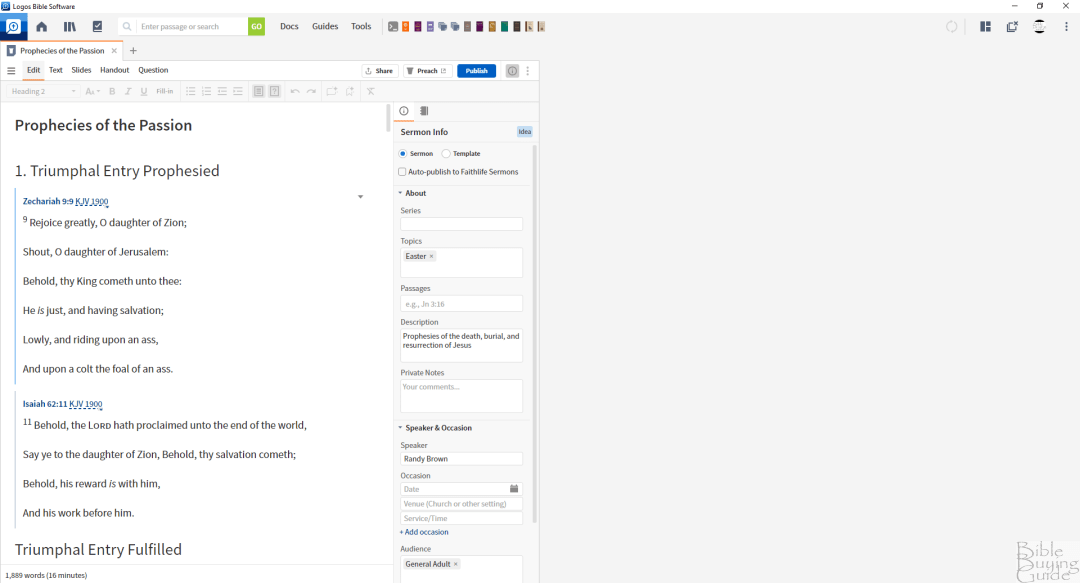
I sometimes use external resources, such as a list of references from a study Bible or that I found in a book or online. When this is the case, I just open the Sermon Builder, fill in the information, and type in the references. Logos 9 brings in the verses for me. I also use this method when I want to write the sermon without distractions. I’ll write the text and bring in the Scriptures I want to use. Sometimes, I’ll open a set of cross-references, but that’s about it (unless I need to open a resource temporarily).
The example above is from the week leading up to Easter. I went through the main prophecies and their fulfillment about the death, burial, and resurrection of Jesus. This is just a list of Scriptures with a title and no notes. I did the same for the birth of Jesus. The lists came from the back of the Thompson Chain Reference Bible for both. Of course, I could have easily had gotten the list from the Factbook, but I already had it in my hand. I can create a sermon without having to access all the resources and becoming overwhelmed by my choices, but they’re easily accessible if I want them.
Sermon Manager
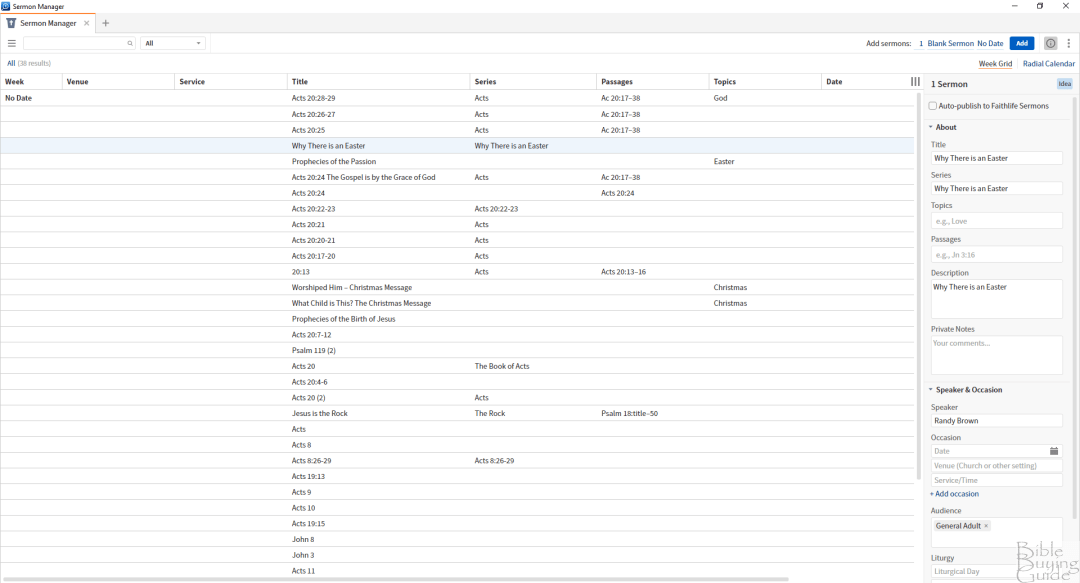
I sometimes refer back to sermons that I’ve created to see what I’ve covered and how I covered it. This is especially helpful for holidays and for preaching through a series. For holidays, I sometimes like to cover the same information in a slightly different way. I was able to upload a sermon that I preached last year on the resurrection, duplicate it, and quickly modify it for this year. All I needed to do was remove some points, rearrange some points, and add Scriptures to focus on certain points or angles. This allowed me to prepare a sermon in a fraction of the time it normally would and I was able to cover the same topic from a different angle without losing the main points.
Preaching
I usually preach from notes on a tablet. This is still the same, but the process has streamlined and the Logos app is better than my previous app because it’s designed for preaching. I used to write the sermon in Word. I’d then email that to my Kindle app or convert it to Kindle transfer it manually, and then preach from the Kindle app. Now, I create the sermon in the Sermon Builder, open the documents within the Logos app on my tablet, select the sermon and preach. Here’s how that process looks…
Preaching with a Tablet
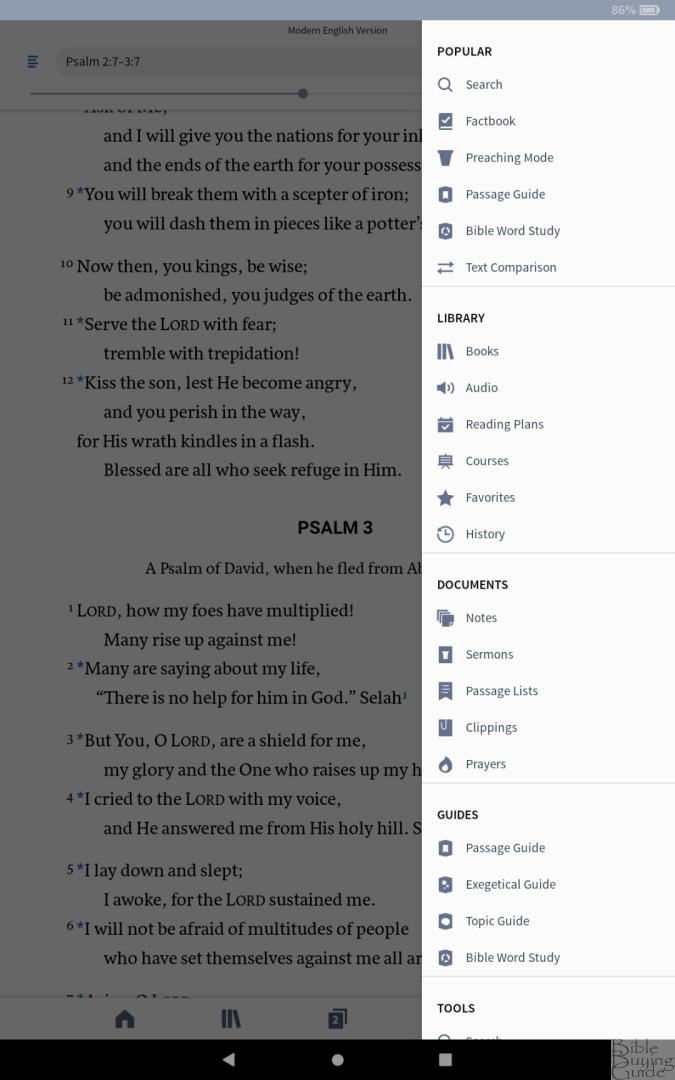
I can access the sermon from Documents or just by clicking on Preaching Mode in the Logos app’s menu on my tablet. First, with my tablet connected to the internet, I open the menu and select Sermons.
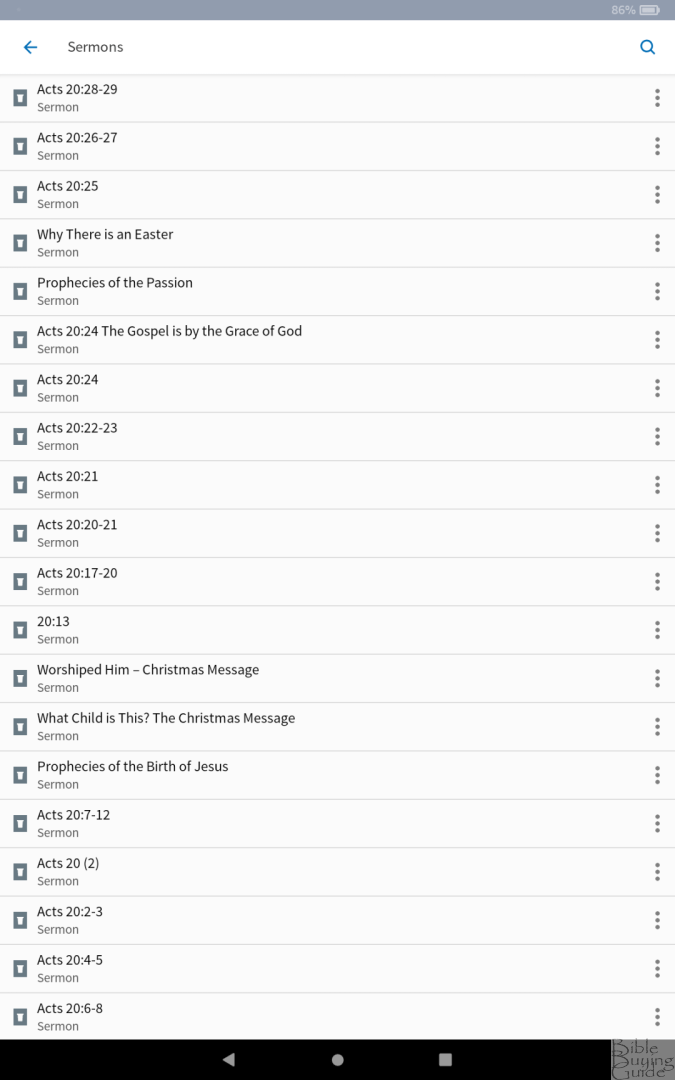
This opens the list of my sermons. I simply select the sermon I want to preach.
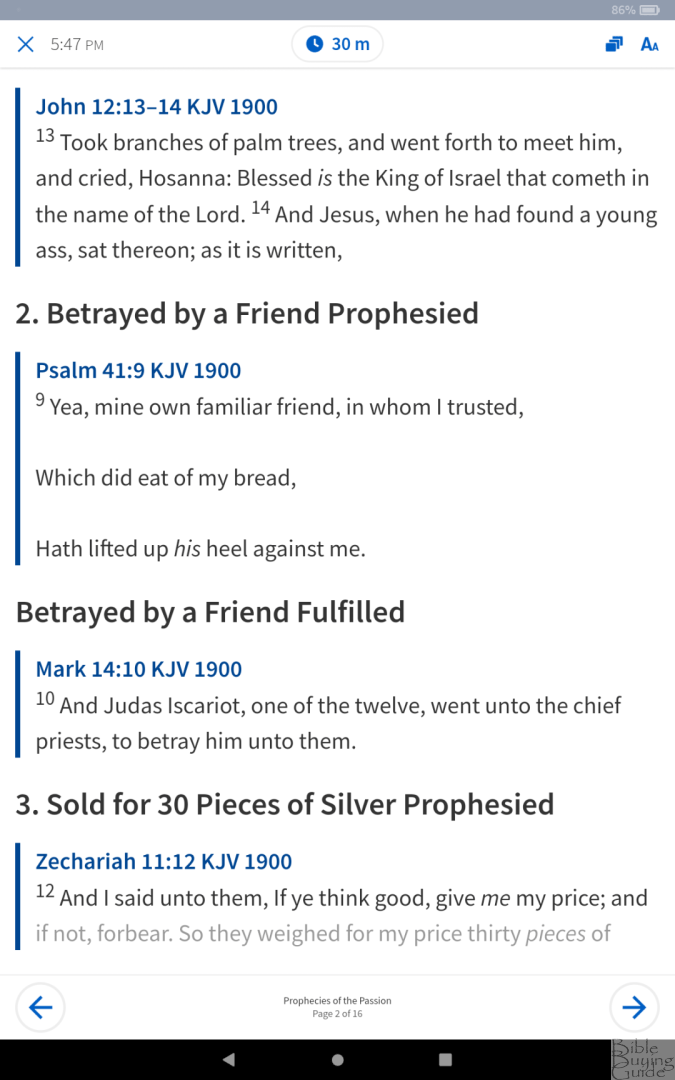
It’s automatically opened in Preaching Mode (if it doesn’t open in Preaching Mode, just click the lectern icon at the top). Verses in the sermon are linked to the Bible. If I click on one it opens the Bible where I can see the entire context. Across the top is the clock with the current time and tools to start a timer and change the font size. I wouldn’t mind having a few more font size options. It goes from large to extra-large, which jumps several points in size with nothing in between.
Across the bottom are the arrows to change the page. It shows what page you’re on and how many pages you have. One of my favorite features is the last line is faded. This is also the first line on the next page. This tells me to change the page, but it also gives me the text that I can read as I’m turning the page. As the page turns, I can keep reading the same line at the top of the page.
Conclusion – Logos 9 – Six Months Later
That’s a look at Logos 9 – six months later. This is how I’ve come to use Logos 9 on a daily basis. I also watch the videos from the courses, browse my library and read what’s interesting or specific books, look through maps and media, search topics in the Factbook and Counseling Guide just to see what’s there, etc. I also like to search commentaries by denomination when I’m looking for insights from a specific viewpoint.
I’m a big fan of Logos 9. I’ve started using Logos more than ever. My methods of using it are probably simple compared to most users, but that’s how I like it. The older I get, the simpler I want things to be. Logos 9 lets me keep it as simple as I want. If I want complex tools, I can use it that way. If I want simple tools, I can use it that way too. All the resources and tools are there when I want them.
Logos 9 is a smart investment. You can start with the free app, buy just the resources you want, and expand if you need to. I’ve upgraded my packages and bought several packages in specific traditions multiple times. Faithlife runs a lot of sales, so there’s always a good deal on resources. Logos 9 is currently on sale for 15% off. This sale goes through June 15, 2021.
For more information about Logos 9, see my review: Logos 9 Bible Software Review
________________________
Purchase Logos 9 (partner)
________________________
Faithlife provided this Bible software in exchange for an honest review. I was not required to give a positive review, only an honest one. All opinions are my own.



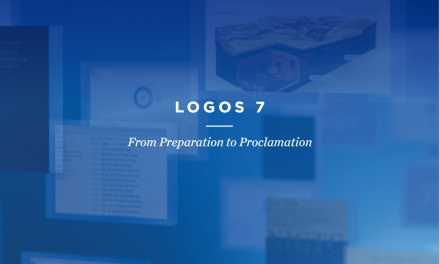






Recent Comments